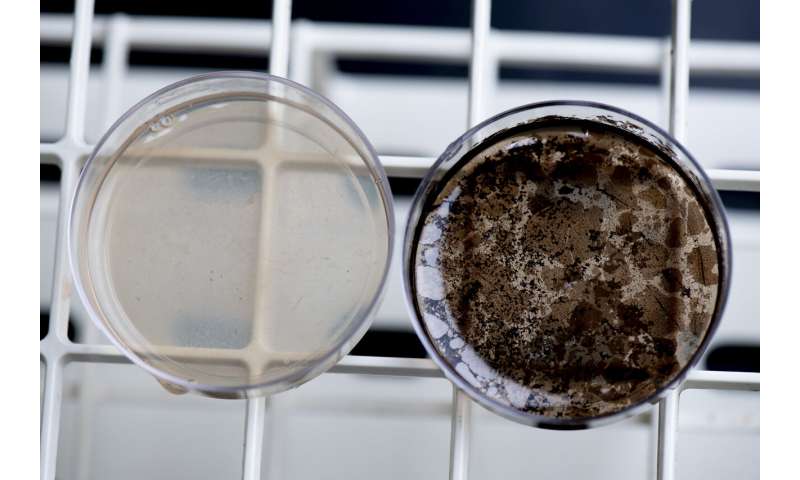Upcoming space mission seeks new bioinspired materials

The U.S. Naval Research Laboratory's Melanized Microbes for Multiple Uses in Space Project, or MELSP, will use the International Space Station (ISS) to search for production of melanin variants and other useful biomaterials that can have applications both on Earth and in space. The mission is scheduled to launch in early November 2023.
Melanin is described as a group of biopolymers responsible for various biological functions, including pigmentation of skin, hair, and iris of the eyes, which helps protect body cells from solar radiation damage.
"The structure and properties of melanin are highly dependent on synthesis and polymerization conditions, therefore the production of melanin in microgravity may lead to new melanin variants with novel physico-chemical properties," said Tiffany Hennessa, Ph.D., research biologist at NRL's Center for Biomolecular Science and Engineering (CBMSE) and co-principal investigator of MELSP. "We will investigate how microgravity and cosmic radiation influences microbial melanin production and study the role that melanin plays in adaptation to the ISS environment."
"Despite the significant research that has previously been conducted to understand the structure and properties of melanin, there remains considerable gaps in our knowledge that have hindered our ability to harness melanin for its full potential," said Zheng Wang, Ph.D., principal investigator of MELSP and research biologist at CBMSE. "Assembly and polymerization of melanin in microgravity may lead to 'more perfect' structures with decreased heterogeneity."
NRL scientists will analyze ISS-grown bacterial and fungal strains that lack the protective capacity of melanin to search for novel mechanisms of protection. The project will culture three microbial species aboard the ISS: bacterium Escherichia coli, along with its engineered strain synthesizing eumelanin; and two melanized fungal strains: Aspergillus niger and Exophiala lecanii-corni, and their melanin-deficient mutants. Additionally, two defective DNA repair mutants of A. niger will be cultured to study the effects of space radiation on fungal DNA and melanin biosynthesis.
The MELSP project may lead to economic gain across multiple markets by providing invaluable insight into the discovery and development of novel biomaterials. It is anticipated that MELSP will generate information invaluable to the growth of this field, including key insights into melanin biosynthesis and its resulting structure-driven activity that can be harnessed for various applications on Earth.
These efforts will provide the first steps necessary to establish biomaterial production hosts for use during long-term space missions. The MELSP project will contribute to the growing body of data surrounding the influence of spaceflight on biological systems and incorporate novel perspectives on the involvement of melanin in such processes.
Provided by Naval Research Laboratory